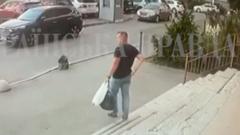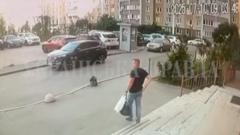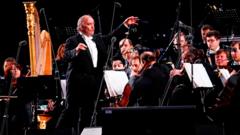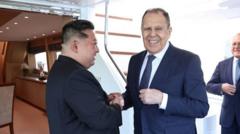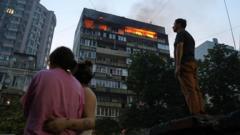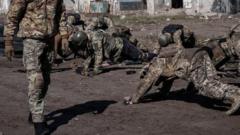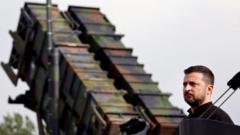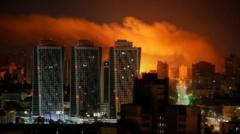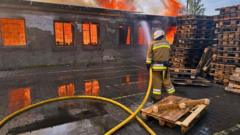The recent swap involved 390 individuals and marked a significant development in the ongoing conflict, despite tensions remaining between both nations.
**Ukraine and Russia Execute Major Prisoner Swap Amid Ongoing Conflict**

**Ukraine and Russia Execute Major Prisoner Swap Amid Ongoing Conflict**
In the largest exchange since the start of the war, Ukraine and Russia have traded hundreds of prisoners, signaling potential for future negotiations.
In a landmark move, Ukraine and Russia have successfully executed the largest prisoner exchange since the onset of the full-scale invasion in 2022, with 390 soldiers and civilians being swapped. This extensive handover, which involved returning 270 servicemen and 120 civilians, took place at the Ukrainian border with Belarus and was the result of direct negotiations held in Istanbul a week prior.
Both nations committed to a more expansive exchange plan involving a total of 1,000 prisoners, indicating that additional swaps may follow soon. Prior prisoner exchanges had occurred, but this is the first time in this conflict that so many civilians have been included. The Russian defense ministry reported that among those returned were individuals captured by Ukrainian forces in recent military offensives.
Ukrainian President Volodymyr Zelensky celebrated the development on social media, emphasizing the careful verification of details of each individual involved in the swap. According to Ukraine's coordination headquarters for war prisoners, the returned servicemen had participated in intense fighting across various regions, including Kyiv, Chernihiv, and Donetsk. Notably, three of the released were women, and some soldiers had endured captivity since the early months of the invasion.
In northern Ukraine, families of captives awaited news with hope and trepidation, expressing fears and uncertainties regarding their loved ones' fates. One mother, Natalia, expressed optimism for the return of her son, captured during hard-fought battles, despite not knowing when he would be home. Meanwhile, speculation arose from US President Donald Trump's comments regarding the potential for a significant breakthrough following the swap.
The deal was achieved amidst ongoing dialogue challenges, as Russia's Foreign Minister Sergei Lavrov confirmed plans for another round of talks, hinting at the submission of a new memorandum to the Ukrainian delegation. While Trump urged immediate negotiations toward a ceasefire following a phone conversation with President Vladimir Putin, Zelensky accused the Russian leader of attempting to stall the process to prolong the conflict.
Italy's Prime Minister Giorgia Meloni backed Trump's call for Vatican mediation in peace negotiations. However, Lavrov dismissed the viability of this option and raised questions about Zelensky's legitimacy, advocating for potential elections in Ukraine prior to reaching any peace agreement. According to him, future agreements must ensure a durable peace without imposing security threats on Russia. The ongoing discussions reveal significant gaps between the two sides, especially as the conflict continues to loom large over Europe.
Both nations committed to a more expansive exchange plan involving a total of 1,000 prisoners, indicating that additional swaps may follow soon. Prior prisoner exchanges had occurred, but this is the first time in this conflict that so many civilians have been included. The Russian defense ministry reported that among those returned were individuals captured by Ukrainian forces in recent military offensives.
Ukrainian President Volodymyr Zelensky celebrated the development on social media, emphasizing the careful verification of details of each individual involved in the swap. According to Ukraine's coordination headquarters for war prisoners, the returned servicemen had participated in intense fighting across various regions, including Kyiv, Chernihiv, and Donetsk. Notably, three of the released were women, and some soldiers had endured captivity since the early months of the invasion.
In northern Ukraine, families of captives awaited news with hope and trepidation, expressing fears and uncertainties regarding their loved ones' fates. One mother, Natalia, expressed optimism for the return of her son, captured during hard-fought battles, despite not knowing when he would be home. Meanwhile, speculation arose from US President Donald Trump's comments regarding the potential for a significant breakthrough following the swap.
The deal was achieved amidst ongoing dialogue challenges, as Russia's Foreign Minister Sergei Lavrov confirmed plans for another round of talks, hinting at the submission of a new memorandum to the Ukrainian delegation. While Trump urged immediate negotiations toward a ceasefire following a phone conversation with President Vladimir Putin, Zelensky accused the Russian leader of attempting to stall the process to prolong the conflict.
Italy's Prime Minister Giorgia Meloni backed Trump's call for Vatican mediation in peace negotiations. However, Lavrov dismissed the viability of this option and raised questions about Zelensky's legitimacy, advocating for potential elections in Ukraine prior to reaching any peace agreement. According to him, future agreements must ensure a durable peace without imposing security threats on Russia. The ongoing discussions reveal significant gaps between the two sides, especially as the conflict continues to loom large over Europe.

